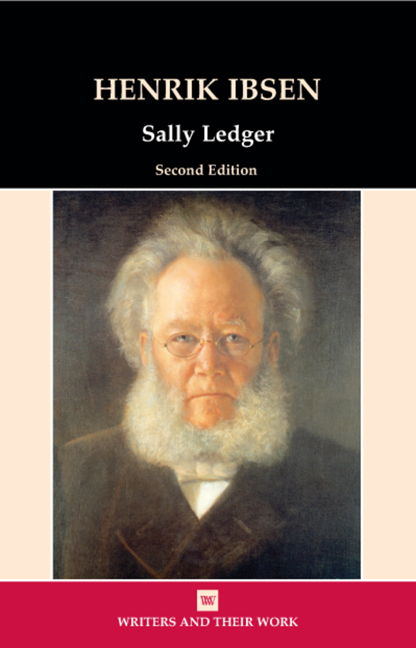Book contents
- Frontmatter
- Dedication
- Contents
- Acknowledgements
- Biographical Outline
- Note on Translations
- Abbreviations
- 1 Ibsenism and A Doll's House
- 2 Ibsen, Realism and ‘Modern’ Drama: From Norwegian Nationalism to Ghosts
- 3 Liberalism and its Discontents: Ibsen's Politics in An Enemy of the People
- 4 Ibsen's Women: The Lady from the Sea, Hedda Gabler and Little Eyolf
- 5 Ibsen, Freud and Psychological Drama: Rosmersholm and Peer Gynt
- 6 Beyond Realism: John Gabriel Borkman and When We Dead Awaken
- 7 Afterword: Ibsen Now
- Notes
- Select Bibliography
- Index
- Recent and Forthcoming Titles in the New Series of WRITERS AND THEIR WORK
6 - Beyond Realism: John Gabriel Borkman and When We Dead Awaken
- Frontmatter
- Dedication
- Contents
- Acknowledgements
- Biographical Outline
- Note on Translations
- Abbreviations
- 1 Ibsenism and A Doll's House
- 2 Ibsen, Realism and ‘Modern’ Drama: From Norwegian Nationalism to Ghosts
- 3 Liberalism and its Discontents: Ibsen's Politics in An Enemy of the People
- 4 Ibsen's Women: The Lady from the Sea, Hedda Gabler and Little Eyolf
- 5 Ibsen, Freud and Psychological Drama: Rosmersholm and Peer Gynt
- 6 Beyond Realism: John Gabriel Borkman and When We Dead Awaken
- 7 Afterword: Ibsen Now
- Notes
- Select Bibliography
- Index
- Recent and Forthcoming Titles in the New Series of WRITERS AND THEIR WORK
Summary
In his dramatic account of John Rosmer's emotional and sexual inhibitions, in Rosmersholm (1886), Ibsen revealed himself as brilliant an analyst of masculine as of feminine sexual psychology. His last two plays – John Gabriel Borkman (1896) and When We Dead Awaken (1899) – greatly extend Ibsen's exploration of the hinterlands of masculine psychology, penetrating its darkest recesses in what must be accounted his gloomiest, most troubling plays. They differ from Rosmersholm in important respects, for whereas in the earlier play there remains a socio-political dimension to the drama – the play is partly about the battle between conservative, traditional values and progressive liberalism – in the last two plays Ibsen turns away from the social criticism of his middle period towards a much more intense focus on individual subjectivity. In this respect, and also in terms of the non-realist dramatic modes deployed, both of his last two plays have rather more in common with Brand and Peer Gynt, plays Ibsen wrote as a young man, than with the dramatic naturalism which brought him both fame and notoriety in the 1870s and 1880s.
Ibsen’ s searching analysis of the inner lives of his protagonists in John Gabriel Borkman and When We Dead Awaken, the emphasis he places on the inner rather than the outer landscapes of human experience, identify him in these final plays with a nascent modernist aesthetic, greatly to be extended in the twentieth century by, amongst others, one of his literary acolytes, James Joyce. The move beyond realism also involves a shift towards symbolic modes of dramatic representation. The shift towards symbolic drama had been clearly announced in Little Eyolf (1894), in which the unwelcome rats can be readily identified with Eyolf, the unwanted child, the ‘troublesome thing’ which the Rat-wife offers to get rid of. The Rat-wife herself is a dream-like figure, a composite character from a fairytale, an emanation of the unconscious, who transforms a dull bourgeois domestic life into a living nightmare. Even before Little Eyolf, in The Lady from the Sea (1888), the sea symbolically represents freedom and sexual liberty, and Ibsen uses the mermaid myth to structure his account of Ellida's imprisonment in her marriage to Dr Wangel.
- Type
- Chapter
- Information
- Henrik Ibsen , pp. 55 - 64Publisher: Liverpool University PressPrint publication year: 2008



